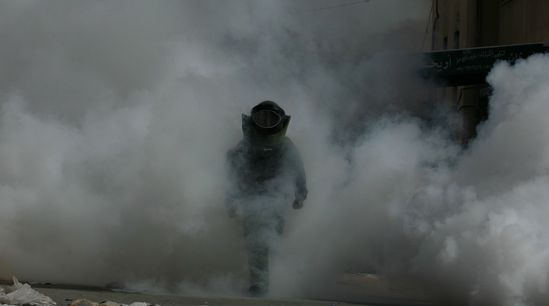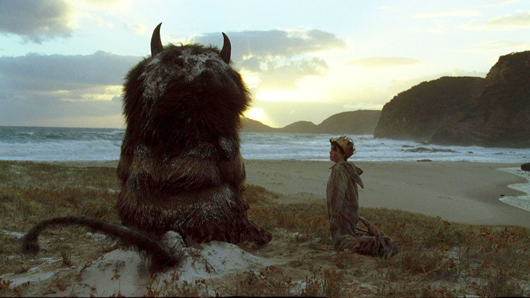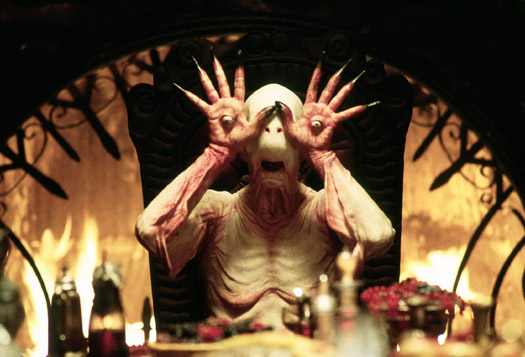
Yeah, I haven't picked up a copy of
American Cinematographer lately, but I'm surprised that
Avatar wound up with a nomination. What percentage of its look is due to Mauro Fiore's photography and how much the numerous wizards on the FX team I can't say with any certainty, but obviously there isn't one scene on Pandora that he had much of anything to do with. But he's also one of the five nominees for the American Society of Cinematographers Award, so whatever it is his peers seem to feel he did something impressive. I just don't get it. This is Mauro's first Oscar nomination. Some of his other credits include
Training Day, Smokin' Aces, Michael Bay's
The Island and the upcoming big-screen
A-Team.

Frenchman Bruno Delbonnel, nominated for the latest cinematic chapter in the
Harry Potter franchise, has two previous noms for his work with Jean-Pierre Jeunet:
Amélie and
A Very Long Engagement (losing both). There are a few more practical locations in
The Half-Blood Prince than
Avatar, but I also can't quite seem to imagine an FX spectacular winning the Oscar...although Andrew Lesnie did win for
The Fellowship of the Ring, over Bruno's
Amélie as a matter of fact, so it's certainly not impossible.

Austrian DP Christian Berger is also enjoying his first Oscar nomination, for one of the Best Foreign Language nominees
The White Ribbon. This is his fifth collaboration with Michael Haneke (including
Caché and
The Piano Teacher). It also marks the third black and white movie to earn an Oscar nomination in the past ten years, the others being
Good Night, and Good Luck (Robert Elswit) and
The Man Who Wasn't There (Roger Deakins). Janusz Kamiński for
Schindler's List was the last time there was a win for black and white cinematography, and the only other nominees since the black and white and color Oscar categories were merged in 1967 are
Raging Bull (Michael Chapman),
Lenny (Bruce Surtees),
The Last Picture Show (Robert Surtees), and
In Cold Blood (Conrad Hall). Will
The White Ribbon become the second winner since 1967? Probably not.
 The Hurt Locker
The Hurt Locker's Barry Ackroyd is a first-time Oscar nominee as well, having spent most of his career in his native England, working with filmmakers like Ken Loach and Paul Greengrass (his next movie to hit the screens will be Greengrass' Iraq piece
The Green Zone). That
The Hurt Locker has eight other noms including four of the "big eight" (Picture, Director, Actor and Original Screenplay) certainly helps his cause, and that he had zero green screen shots to process versus a zillion in
Avatar may give him the slight edge here.

The fifty-four-year-old Robert Richardson is one of the reigning masters of cinematography.
Inglourious Basterds is his sixth Oscar nomination, and he's already won twice for Scorsese's
The Aviator and Stone's
JFK. He also now has nine nominations at the American Society of Cinematographers Awards (though curiously hasn't won one there yet). It's the second time he's worked with Tarantino, previously having collaborated on
Kill Bill. If Richardson does win this year, he'll join Vittorio Storaro (
Apocalypse Now, Reds, The Last Emperor) as the only living three-time winner in this category. Conrad Hall, Robert Surtees, Winton Hoch, Arthur Charles Miller, and Freddie Young are all also three-time Oscar winners. Leon Shamroy won four Oscars for cinematography (
Cleopatra, Leave Her to Heaven, Wilson and
The Black Swan) and had another fourteen noms.
For me this is a tough call between Richardson and Ackroyd. The momentum of
The Hurt Locker may be enough to carry him to the top, but I'm rooting for Robert and
Inglourious Basterds. Though really, as long as
Avatar doesn't win, I'll be happy...which means it'll probably win.

































